Posts tagged 'Astronomy'
Stardust
”Voyager 1 and Voyager 2 are the ships that opened the Solar System for the human species, trailblazing a path for future generations. Before their launch, in August and September 1977, we were almost wholly ignorant about most of the planetary part of the Solar System. In the next dozen years, they provided our first detailed, close-up information on many new worlds–some of them previously known only as fuzzy disks in the eyepieces of ground-based telescopes, some merely as points of light, and some whose very existence was unsuspected. They are still returning reams of data.
These spacecraft have taught us about the wonders of other worlds, about the uniqueness and fragility of our own, about beginnings and ends. They have given us access to most of the Solar System–both in extent and in mass. They are the ships that first explored what may be homelands of our remote descendants.” – from Pale Blue Dot by Carl Sagan
I’ve always been rathered enamoured with the Voyager program – especially the Golden Record, which you’ll get a close-up of at 2:35 – and the fantastic visuals in the attached short by PostPanic do a great job of embroidering JPL‘s masterwork with an appropriate sense of reverence and wonder.
Stardust‘s director, Mischa Rozema, wanted to (among other things) create a film that showed what the universe looked like, “from a different point of view. For example, standing on the surface of the sun looking upwards or witnessing the death and birth of a star - not at all scientifically correct but instead a purely artistic interpretation of such events.”
As you’ll see, he succeeded and the end result (for me, at least) provided a much needed shift in perspective. It’s gorgeous; the perfect companion for a late-night, contemplative, solitary sesh. Enjoy!
[ Stardust ]
posted by respondcreate on Feb. 20, 2013 in Videos | tags: animation, astronomy, hd, mischa rozema, nasa, perspective, postpanic, space, spiritual, voyager
Bye Bye Macadam
It appears Dimitri Stankowicz has been hard at work honing his solid-color-fill vector animation style since we first posted his entry into Björk’s Innocence video contest two years ago. The visuals in the attached sync up beautifully (both in timing and spirit) with Rone‘s deep, synth-driven, spaced-out sound. The net-effect is pure, distilled atmosphere so get it loaded in 1080p and strap your headphones on.
This one’s a treat and we owe Brandon Michael Azzarella a big thanks for sharing it with us on Facebook. Cheers, Brandon!
P.S. If you find that your taste in music tends to line-up with my mine then don’t hesitate to pick up the full-length album ‘Bye Bye Macadam’ is from, Tohu Bohu. It’s packed to the brim with the type of soaring, emotive electronica that’s pitch-perfect for late-night drives and contemplative lazy afternoon seshes.
[ Rone - Bye Bye Macadam (Official Video) ]
posted by respondcreate on Jan. 07, 2013 in Videos | tags: animation, astronomy, atmospheric, black and white, dimitri stankowicz, electronic music, fantasy, hd, magic, monochromatic, music video, rone, trippy, vector, wormhole
We are stardust.
“If you take all of the iron from the hemoglobin of the people in the tri-state area of New York City, you can recover that much iron out of their blood and realize that the iron from that meteorite and the iron from your blood has common origin in the core of a star…as Carl Sagan has said, ‘We are star-stuff’ but there’s a more poetic – and I think more accurate – way to say it; it’s quite literally true that we are stardust. In the highest exalted way one can use that phrase.” –Neil DeGrasse Tyson
Whoa. Deep, bro.
[ Neil DeGrasse Tyson - Greatest Sermon Ever ]
posted by respondcreate on Mar. 10, 2012 in Videos | tags: astronomy, inspirational, neil degrasse tyson, space, spiritual, spirituality
End of an Era
“There’s plenty of housework to be done here on earth – and our commitment to it must be steadfast – but we’re the kind of species that needs a frontier for fundamental biological reasons. Every time humanity stretches itself it receives a jolt of productive vitality that can carry it for centuries.” –Carl Sagan
Reid Gower was commissioned by NASA to create a series of films that would pay tribute to Carl Sagan, the brilliant mind the center of Cosmos: A Personal Voyage, one of my all-time favorite documentary series produced by PBS. The video attached above is part six of (currently) seven of The Sagan Series so click the previous link to see the rest of them. Oh and Cosmos is getting a reboot courtesy of Seth MacFarlane (of Family Guy fame) and Neil Degrasse Tyson, the host of NOVA scienceNOW (another fantastic PBS property that you can watch for free online). Needless to say, I’m really looking forward to it.
[ The Sagan Series (part 6) - End of an Era: The Final Shuttle Launch ]
posted by respondcreate on Aug. 31, 2011 in Videos | tags: astronomy, carl sagan, cosmos, hd, inspirational, nasa, reid gower, science, space, the sagan series
The Aurora Borealis
“The Sun acts as an enormous power plant. The energy is created deep inside the core of the Sun, here the temperature is over 14 million degrees and the pressure so enormous that hydrogen atoms are squeezed together into another element: helium.”
Time for some science, bitches – prepare to get your learn on! The Sun is an endlessly fascinating topic for me and this video, produced by forskning.no in concert with the Department of Physics at the University of Oslo, does a great job of explaining the complex process of how the Aurora Borealis forms in an easy-to-understand way. Speaking of which, my favorite way to wrap my head around complex topics, like nuclear fusion, is to first head over to Simple English Wikipedia. It’s page on The Sun is fantastic – “The sun is basically a very, very large ball of plasma bubbling with non-stop explosions. These explosions give off so much energy that if we could gather all the Sun’s energy for one second it would be enough to power the U.S.for 9 million years…more” – as are the entries pertaining to the Higgs Boson, strong force and the special theory of relativity. Don’t forget: knowledge is power.
Related: More Aurora Borealis on The Tripatorium™.
posted by respondcreate on Jul. 08, 2011 in Videos | tags: animation, astronomy, aurora borealis, colorful, educational, science, space, sun
Parallelostory
We’ve featured the work of Kelly Meador and Daniel Elwing (a.k.a. impactist) on the site before so it was no surprise when we found out this little astronomy-themed vignette came from them. Per the impactist M.O. they handle everything from the visuals to the music. The latter can be found for purchase here at the super-affordable rates of $1 a single or $3 for an EP (my personal favorites are the Last Heist and Color Fields & Wagon Wheels EPs). When you support art at reasonable prices you get more art at reasonable prices (sometimes for free). OK, enough with the soapbox. Enjoy your weekend, friends!
P.S. Thanks for all the fantastic submissions that have been coming in lately, we’re working our way through them!
[ Parallelostory ]
posted by respondcreate on May. 13, 2011 in Videos | tags: animation, astronomy, hd, impactist, love, science, space
Voyager 1 Approaches Jupiter
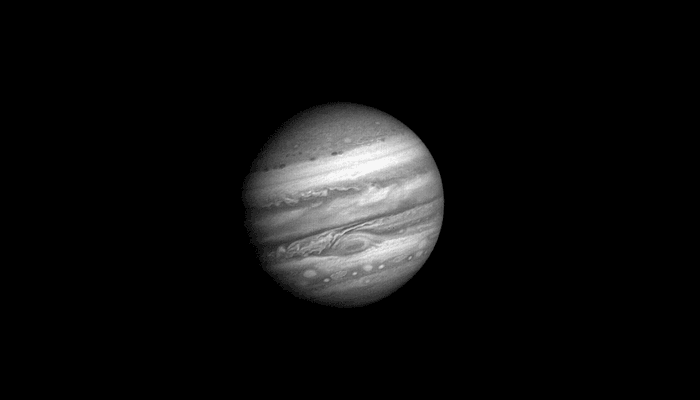
“One frame of this image was taken each Jupiter day (approximately 10 hours) between January 6 and February 9, 1979, as the space probe [Voyager I] flew from 58 million to 31 million kilometers from Jupiter during that time. The small, round, dark spots appearing in some frames are the shadows cast by the moons passing between Jupiter and the Sun, while the small, white flashes around the planet, are the moons themselves.”
Inspired by the gorgeous shot of Jupiter’s ‘Great Red Spot’ tizmatti posted a couple of weeks back, I decided to read up on Jupiter’s unique atmosphere. Turns out it’s a pretty tumultuous place comprised of constantly shifting cloud layers and swirling, violent vortices (of which the ‘Great Red Spot’ is the largest). It’s truly fascinating stuff.
[ NASA: Jupiter via Wikipedia ]
posted by respondcreate on Apr. 08, 2011 in Pictures | tags: animated gif, astronomy, jupiter, nasa, science, space, time lapse, voyager
Spring Eclipse
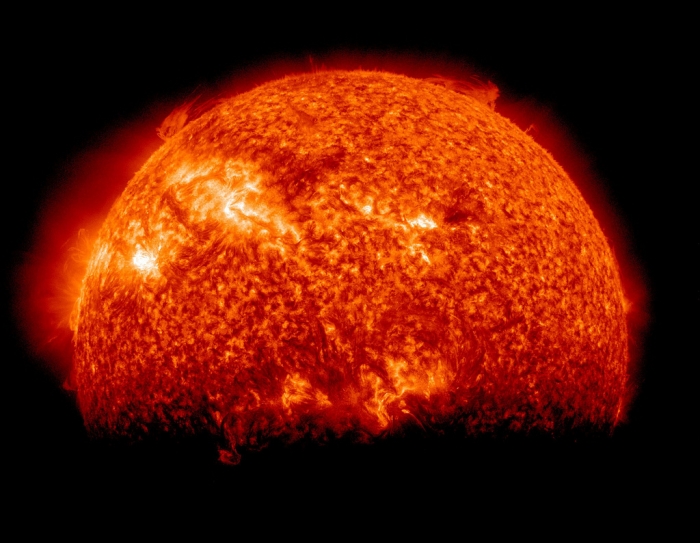
“Twice a year, SDO enters an eclipse season where the spacecraft slips behind Earth for up to 72 minutes a day. Unlike the crisp shadow one sees on the sun during a lunar eclipse, Earth’s shadow has a variegated edge due to its atmosphere, which blocks the sun light to different degrees depending on its density.”
This image comes to us courtesy of NASA’s Solar Dynamic Observatory – for more fantastic hi-def imagery of the cosmos head over to the NASA Goddard Photo and Video’s Flickr stream.
[ SDO Sees Spring Eclipse via Gizmodo ]
posted by respondcreate on Apr. 04, 2011 in Pictures | tags: astronomy, eclipse, nasa, sdo, space, sun
The Known Universe
“The Known Universe takes viewers from the Himalayas through our atmosphere and the inky black of space to the afterglow of the Big Bang. Every star, planet, and quasar seen in the film is possible because of the world’s most complete four-dimensional map of the universe, the Digital Universe Atlas that is maintained and updated by astrophysicists at the American Museum of Natural History.”
This video is a personal favorite of mine – I’ve watched it around nine or ten times – and don’t know why it didn’t occur to me sooner to put it up on the site. The Known Universe was directed by Carter Emmart with music by Suke Cerulo. Read more on amnh.org.
[ The Known Universe by AMNH ]
posted by respondcreate on Mar. 28, 2011 in Videos | tags: amnh, astronomy, hd, science, space, spiritual, trippy, universe
Hey, Joopita!
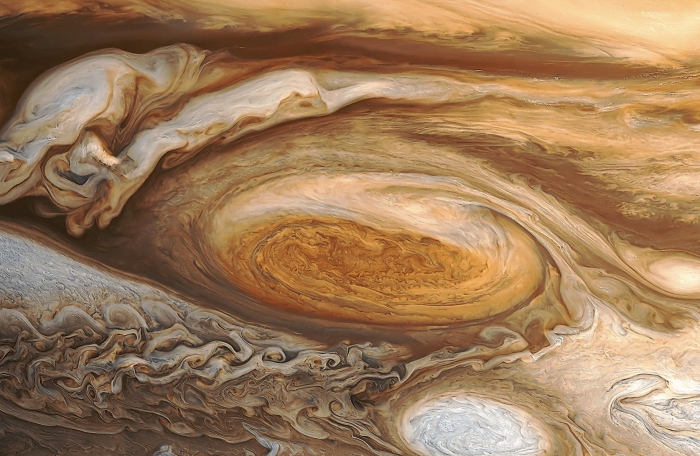
psst! you should definitely click for the full size on this one
Never seen Jupiter’s “Great Red Spot” so up close, er, zoomed in. Pretty rad.
[ Great Red Spot ]
posted by tizmatti on Mar. 24, 2011 in Pictures | tags: astronomy, jupiter, photography, space
Solar prominence
“When a rather large-sized (M 3.6 class) flare occurred near the edge of the Sun, it blew out a gorgeous, waving mass of erupting plasma that swirled and twisted over a 90-minute period… read more”
The good folks at NASA captured this on February 24, 2011 and it helped reacquaint me with just how small and insignificant I am – a realization I always find is tremendously freeing. If you are as fascinated about this kind of stuff as I am you’ll probably enjoy reading more about solar prominences on wikipedia.
[ NASA's SDO Captures a Monster Prominence [video] via Gizmodo ]
posted by respondcreate on Mar. 07, 2011 in Videos | tags: astronomy, humbling, nasa, nature, space, sun, trippy
Scale
It’s difficult to get your mind around just how big stuff in our solar system is – never mind in the rest of the universe – which is why I love videos like this one from Brad Godspeed which shows how big some of the planets would appear in the sky if they orbited earth at the same distance as the moon.
Many thanks to Kenaldo for sending it in. Cheers!
[ Scale ]
posted by respondcreate on Feb. 10, 2011 in Videos | tags: astronomy, brad godspeed, planets, scale, science, trippy
24 Hour View
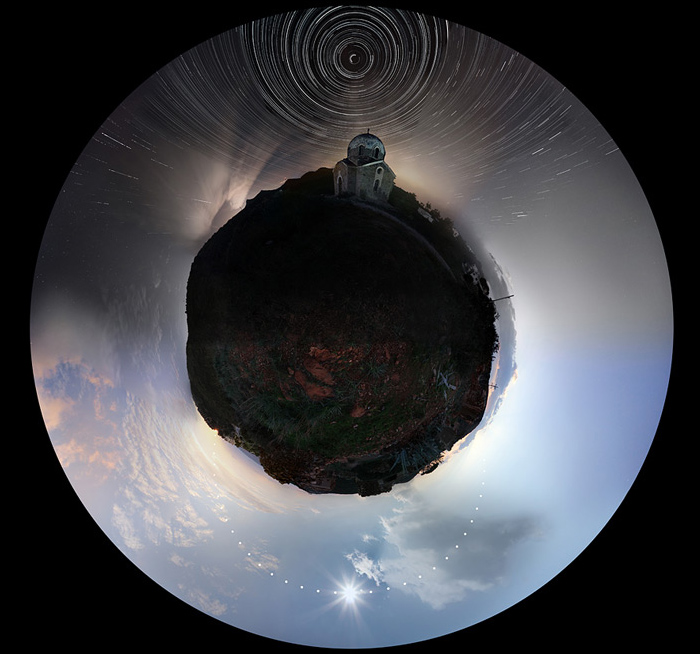
“After wondering for some time whether it was possible to image the sky from one morning to the next where I live in Athens Greece, I decided to give it a try. After hours of planning and preparation, and a full day of shooting, the image above is the result of this labor of love. It took me about 12 hours to pull together and process a single image that included over 500 star trails, 35 shots of the Sun and 25 landscape pictures…more” -Chris Kotsiopoulos
[ Twenty Four Hour View of the Sky via Gizmodo ]
posted by respondcreate on Jan. 27, 2011 in Pictures | tags: astronomy, chris kotsiopoulos, nature, photography, sky, stars, trippy
Aurora Borealis Timelapse
Gorgeous, gorgeous, gorgeous! Tor Even Mathisen took some great time lapse sequences of the Aurora Borealis show in Tromsø, Norway and then stitched them together into a video and backed it with the ethereal music of Per Wollen and Silje Beate Nilssen. Dim the lights for this one.
[ Aurora Borealis timelapse HD - Tromsø 2010 via APOD ]
posted by respondcreate on Nov. 24, 2010 in Videos | tags: astronomy, aurora borealis, hd, norway, per wollen, photography, space, time lapse, tor even mathisen, trippy
A Show, A Comet, A Storm
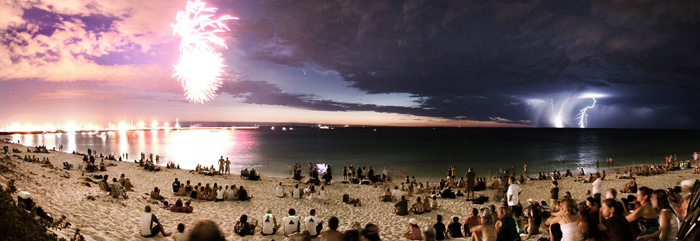
Comet McNaught (kinda sounds like a friend of Buzz Lightyear, no?) passes between a fireworks show and an incoming storm in Perth, Austrailia. As seen on the reliably excellent Astronomy Picture of the Day by NASA. Click through for a high-res version.
[ APOD: 2007 February 5 - Comet Between Fireworks and Lightning ]
posted by respondcreate on Nov. 24, 2010 in Pictures | tags: apod, astronomy, beach, comet, fireworks, nature, space, storm, trippy